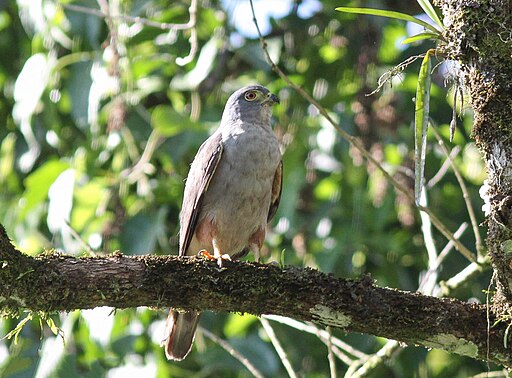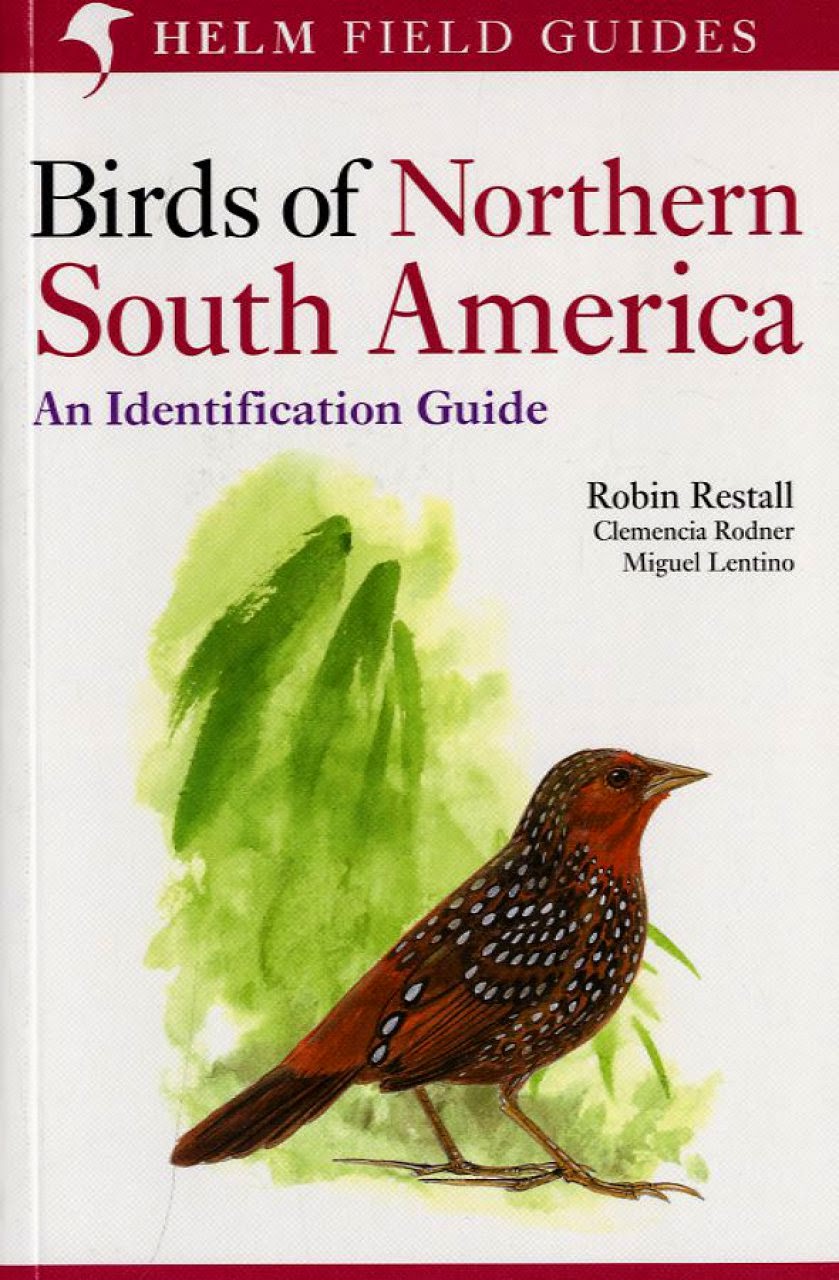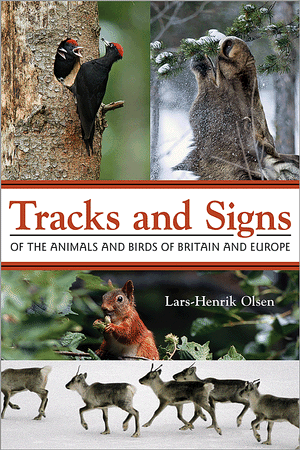Back from a few days' camping in the Yorkshire Dales to find copies of Neotropical Birding 15 on my doormat, fresh from the printers...
Welcome to issue 15 of Neotropical Birding!

The Autumn 2014 issue of Neotropical Birding, NB15, has just been published. This issue commemorates the life of Alexandre Renaudier, the young French ornithologist who died prematurely last year. Alex was a very keen birder, who spent most of his time in the field and made some extraordinary ornithological discoveries. He had a sensitive ear, testimony to which is the wonderful collection of recordings he co-authored:
Bird Voices from French Guiana. He had a close relationship with NBC, acting as Country Representative for France and French Guiana between 2006 and 2013.
Appropriately, our cover story presents the first photographs of the enigmatic Rusty Tinamou
Crypturellus brevirostris from Alex's adopted home, French Guiana – truly
Birding at the cutting edge.
Our first
Photospot provides further ground-breaking images from the same country, this time of nesting Black-bellied Cuckoo
Piaya melanogaster, while the second piece is dedicated to another mysterious species, Giant Snipe
Gallinago undulata.
Alex rarely found the desk-time necessary to publish his findings, but in our
Identification Workshop, he and his friend Olivier Claessens reprise
Field identification of Least and Yellow-billed Terns, a subject explored by Floyd Hayes in
Cotinga in 2001. Further advances have made this challenge a lot easier and should result in better reporting in the future.
Switching environments somewhat, the American Bird Conservancy's Dan Lebbin takes us back to northern Peru, in a sequel to his
Nightbirds article published in NB11. Dan returns in the daytime, with some suggestions for tracking down 50 species of hummingbird. A
Hummingbird Paradise, perhaps?
No issue of
Neotropical Birding is complete without an invitation from Alex Lees to “get your lists out” for another roller-coaster ride through the world of avian taxonomy and systematics in
Splits, lumps and shuffles (one of Alex Renaudier's favourite columns).
Our compilation of recent published and unpublished records,
Neotropical Notebook, is compiled by Guy Kirwan and his team of collaborators: Dušan Brinkhuizen, Diego Calderón, Bradley Davis, Jeremy Minns and Kini Roesler.
NBC has always played a role in conserving Neotropical Birds. Jez Bird tells us about this year's award winners and the continuing benefits of projects financed in the past in
NBC Conservation Awards Update. Your contribution to NBC helps Award recipients give something back to the Neotropical birds we all enjoy.
We round off the issue with
Book reviews of two of last year's most exciting publications:
Birdwatching in Colombia and
Birds and People.
Happy Neotropical birding!
Christopher J. Sharpe, Senior Editor
Neotropical Birding 15: contents
Sharpe, C. J. (2014) Welcome to issue 14 of
Neotropical Birding.
Neotrop. Birding 15: 2.
Ingels, J., Claessens, O. & de Pracontal, N. (2014)
Neotropical Birding 15: a tribute to Alexandre Renaudier.
Neotrop. Birding 15: 3. E-mail: johan.ingels@skynet.be
Lees, A. C. (2014) Splits, lumps and shuffles.
Neotrop. Birding 15:
4–14. [resume of recent publications on taxonomy and systematics
concerning multiple taxa] E-mail: alexanderlees@btopenworld.com
Rufray, V., Pelletier, V. & Ingels, J. (2014) First photographs and new records of the Rusty Tinamou
Crypturellus brevirostris from French Guiana.
Neotrop. Birding 15: 15–19. [
Crypturellus brevirostris] E-mail: vrufray@biotope.fr / johan.ingels@skynet.be
Claessens, O. & Renaudier, A. (2014) Field identification of Least and Yellow-billed Terns: experience from French Guiana.
Neotrop. Birding 15: 22–31. [
Sternula superciliaris, Sternula antillarum] E-mail: olivier.claessens@gepog.org
Lebbin, D., Aucca Chutas, C., Olmos, F. & Spencer, A. (2014) Hummingbird paradise: northern Peru.
Neotrop. Birding 15: 33–41. [multiple Trochilidae spp. of N Perú] E-mail: dlebbin@abcbirds.org
Kirwan, G. M., Brinkhuizen, D., Calderón, D., Davis, B., Minns, J. &
Roesler, I. (2014) Neotropical Notebook: published and unpublished
records.
Neotrop. Birding 15: 46–62. [resume of recent records concerning multiple taxa] E-mail: gmkirwan@aol.com
Ingels, J. & Fernandez, M. (2014)
Photospot: A nest of Black-bellied Cuckoo
Piaya melanogaster in French Guiana.
Neotrop. Birding 15: 63–65. [
Piaya melanogaster] E-mail: johan.ingels@skynet.be
Smith, P., Bland, D. & Clay, R. (2014)
Photospot: Waka Waka: The Giant Snipe
Gallinago undulata in Paraguay.
Neotrop. Birding 15: 66–69. [
Gallinago undulata] E-mail: faunaparaguay@gmail.com
Bird, J. (2014) NBC Conservation Awards update.
Neotrop. Birding 15: 71–75. [
Glaucidium nubicola, Megascops colombianus, Coeligena orina, Henicorhina negreti, Dacnis hartlaubi, Compsospiza garleppi] E-mail: jezbird@gmail.com
Morris, P. (2014)
Book review: Birdwatching in Colombia.
Neotrop. Birding 15: 78–79. E-mail: pete.morris@virgin.net
Sharpe, C. J. (2014)
Book review: Birds and people.
Neotrop. Birding 15: 79–80. E-mail: neotropical.birding@neotropicalbirdclub.org

 In a couple of weeks' time I will be returning to Guyana for a month of bird tours. If you have not considered Guyana as a birding
destination, you might like whet your appetite with Chris Collins' 2007
article in Neotropical Birding, Guyana: South America's overlooked birding destination and An update on birding in Guyana, co-authored with Barry Walker. Interested? The one snag with birding Guyana is that there is currently no field guide to the birds of Guyana, so people always ask which identification guides to take. These are my recommendations.
In a couple of weeks' time I will be returning to Guyana for a month of bird tours. If you have not considered Guyana as a birding
destination, you might like whet your appetite with Chris Collins' 2007
article in Neotropical Birding, Guyana: South America's overlooked birding destination and An update on birding in Guyana, co-authored with Barry Walker. Interested? The one snag with birding Guyana is that there is currently no field guide to the birds of Guyana, so people always ask which identification guides to take. These are my recommendations. Birds of Northern South America: An Identification Guide, Volume 2: Plates and Maps by Robin Restall, Clemencia Rodner, & Miguel Lentino.
Birds of Northern South America: An Identification Guide, Volume 2: Plates and Maps by Robin Restall, Clemencia Rodner, & Miguel Lentino. Voices of the Brazilian Amazon / Vozes da Amazônia Brasileira, Vol. 1 by Luciano Naka, Phil Stouffer, Mario Cohn-Haft, Curtis Marantz, Andy Whittaker & Bob Bierregard.
Voices of the Brazilian Amazon / Vozes da Amazônia Brasileira, Vol. 1 by Luciano Naka, Phil Stouffer, Mario Cohn-Haft, Curtis Marantz, Andy Whittaker & Bob Bierregard. Claxton: Field Notes from a Small Planet
Claxton: Field Notes from a Small Planet  The Autumn 2014 issue of Neotropical Birding, NB15, has just been published. This issue commemorates the life of Alexandre Renaudier, the young French ornithologist who died prematurely last year. Alex was a very keen birder, who spent most of his time in the field and made some extraordinary ornithological discoveries. He had a sensitive ear, testimony to which is the wonderful collection of recordings he co-authored: Bird Voices from French Guiana. He had a close relationship with NBC, acting as Country Representative for France and French Guiana between 2006 and 2013.
The Autumn 2014 issue of Neotropical Birding, NB15, has just been published. This issue commemorates the life of Alexandre Renaudier, the young French ornithologist who died prematurely last year. Alex was a very keen birder, who spent most of his time in the field and made some extraordinary ornithological discoveries. He had a sensitive ear, testimony to which is the wonderful collection of recordings he co-authored: Bird Voices from French Guiana. He had a close relationship with NBC, acting as Country Representative for France and French Guiana between 2006 and 2013. Woodpeckers of the World
Woodpeckers of the World Tracks and Signs of the Animals and Birds of Britain and Europe
Tracks and Signs of the Animals and Birds of Britain and Europe
 The book is small
and light enough to fit into a large pocket, pouch or handbag, so it
can be taken almost anywhere. It is very well organised and carefully
laid out, with text opposite or next to plates, so there is no need
to flip back and forth to find a description. The book is split into
two sections: terrestrial and marine. Chapters on terrestrial
wildlife deal with plants, mammals, birds, reptiles, amphibians,
freshwater fish and invertebrates. The marine section covers whales
and manatee, sea turtles, reef fish and marine invertebrates,
including shells. So, whether in the mountains, on the beach, or
snorkelling, this guide should be of service. The 451 commonest and
most widespread species have been chosen, leaving out a large number
of organisms that are rarely encountered. Most of the illustrations
are paintings by several different artists, but plants and
invertebrates are depicted with photographs. Given the track record
of the authors, each with over 40 years' experience in the Caribbean,
the user can be sure that the text is authoritative.
The book is small
and light enough to fit into a large pocket, pouch or handbag, so it
can be taken almost anywhere. It is very well organised and carefully
laid out, with text opposite or next to plates, so there is no need
to flip back and forth to find a description. The book is split into
two sections: terrestrial and marine. Chapters on terrestrial
wildlife deal with plants, mammals, birds, reptiles, amphibians,
freshwater fish and invertebrates. The marine section covers whales
and manatee, sea turtles, reef fish and marine invertebrates,
including shells. So, whether in the mountains, on the beach, or
snorkelling, this guide should be of service. The 451 commonest and
most widespread species have been chosen, leaving out a large number
of organisms that are rarely encountered. Most of the illustrations
are paintings by several different artists, but plants and
invertebrates are depicted with photographs. Given the track record
of the authors, each with over 40 years' experience in the Caribbean,
the user can be sure that the text is authoritative.